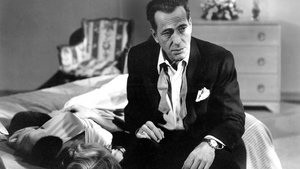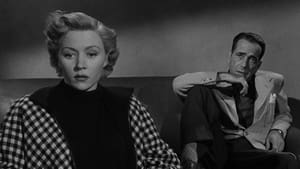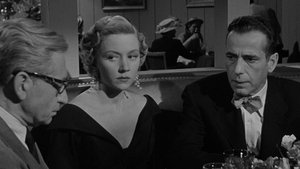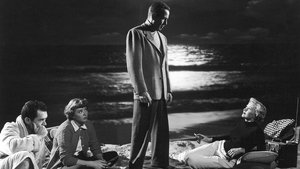Contact: [email protected]
Video Sources 0 Views
- Watch trailer
- In a Lonely Place Colorized

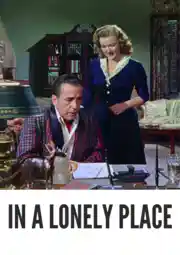
Synopsis
[ez-toc]




Introduction
In the ever-evolving landscape of cinema, the restoration and colorization of old films have become a polarizing yet fascinating aspect. This transformation not only rejuvenates classic movies but also introduces them to a new generation of audiences. “In a Lonely Place Colorized 1950” serves as a prime example of this phenomenon, taking a noir classic from the depths of black and white and infusing it with a vibrant palette. As we delve into the legacy of this film, we’ll explore the key performances, the adaptation process, and the controversy surrounding the colorization, providing a comprehensive analysis of how this cinematic gem has been given a new lease on life.
Read Media File Transfer Agreement: Terms and Conditions
Read FAQ
The Legacy of “In a Lonely Place Colorized”
Directed by the legendary Nicholas Ray, “In a Lonely Place Colorized” stands as a testament to the brilliance of old films. Released in 1950, the film features the incomparable duo of Humphrey Bogart and Gloria Grahame, both delivering performances that etched their names into the annals of cinematic history. Ray, known for his innovative approach to storytelling, crafted a noir masterpiece that delves into the dark recesses of the human psyche. Santana Productions played a crucial role in supporting such groundbreaking films, fostering an environment where creativity thrived.
Bogart’s portrayal of Dix Steele, a troubled screenwriter with a penchant for volatility, and Grahame’s enigmatic Laurel Gray created characters that transcended the screen. The film’s noir aesthetic, with its atmospheric visuals and moral ambiguity, positioned “In a Lonely Place Colorized” as a defining work within the genre.
From Page to Screen: The Adaptation Process
The journey from page to screen is often a delicate dance, and “In a Lonely Place Colorized” navigated it with finesse. Adapted from Dorothy B. Hughes’ 1947 novel, the screenplay retained the novel’s dark undertones while making subtle yet impactful changes. The story follows Dix Steele, a troubled writer suspected of murder, as he navigates a torrid affair with Laurel Gray. The film masterfully captures the internal struggles and psychological complexities of the characters, highlighting the fragility of post-war relationships.
Exploring Themes Through Color: A Cinematic Analysis
Colorization brings a new dimension to the narrative, offering a fresh perspective on the film’s themes. “In a Lonely Place Colorized 1950” delves into post-war alienation, the nature of obsession, and the destructive power of relationships with a visual vibrancy that adds layers to the storytelling. The colorized edition introduces a palette that enhances the emotional impact, using warm hues to intensify moments of passion and cool tones to underscore the isolation and despair of the characters.
In comparing the original black-and-white version to the colorized edition, one can discern the nuanced ways in which color impacts the viewer’s perception. The stark shadows of the noir genre take on new life, and the contrast between light and dark becomes more pronounced, mirroring the characters’ emotional states. It’s a testament to the power of color to convey subtle nuances that may have been overlooked in the monochromatic original.
The Controversy of Colorization
Colorizing old movies has long been a source of contention within the film community. The debate revolves around the balance between attracting new audiences and preserving the director’s original vision. Techniques in colorization have evolved over the years, with advancements allowing for more nuanced and faithful representations of the filmmaker’s intent.
However, the question remains: does colorization compromise the artistic integrity of a classic? The process itself involves meticulous restoration work, ensuring that every frame respects the original composition while adding a new layer of visual richness. The controversy invites reflection on the intersection of art and technology, challenging purists to reconsider the value of color as a tool for preservation rather than dilution.
Critical Acclaim and Performances
As “In a Lonely Place Colorized 1950” emerged, critics and audiences grappled with the concept of color breathing new life into an old classic. Some praised the film for introducing a modern audience to the timeless tale, while others questioned the necessity of tampering with a cinematic masterpiece.
Humphrey Bogart’s portrayal of Dix Steele garnered acclaim for its nuanced exploration of a troubled anti-hero. The colorized version accentuates Bogart’s performance, adding a layer of complexity to the character’s internal struggles. Gloria Grahame’s presence as Laurel Gray remains mesmerizing, her enigmatic allure shining even brighter in the colorized rendition. The performances, when seen through the lens of color, reveal subtleties that enhance the overall viewing experience.
The Noir Aesthetic: Visual Style and Influences
Nicholas Ray, known for his directorial prowess, imbued “In a Lonely Place Colorized” with a distinctive visual style that both aligned with and subverted noir conventions. The film’s moody cinematography, stark lighting, and shadowy compositions pay homage to the noir classics of the era while carving out a unique identity. Ray’s influence, though in line with contemporaries like Elia Kazan, introduces a rawness and emotional intensity that set “In a Lonely Place Colorized” apart.
The colorized version, while maintaining the noir aesthetic, amplifies the visual impact. Deep reds heighten moments of passion and danger, while muted blues evoke the loneliness that permeates the narrative. The juxtaposition of color and shadow adds a layer of complexity to the film’s visual storytelling, inviting viewers to appreciate the noir aesthetic in a new light.
Preserving Cinematic Gems: The Legacy of “In a Lonely Place Colorized 1950”
The colorization of “In a Lonely Place” sparks a broader conversation about the preservation of cinematic treasures. While purists may balk at the idea of altering an original masterpiece, the intent behind colorization is to breathe new life into old films, ensuring their relevance for future generations. The colorized version serves as a bridge between the past and present, inviting contemporary audiences to engage with a classic in a way that feels both familiar and fresh.
As we encourage readers to explore “In a Lonely Place Colorized 1950,” the goal is not to diminish the value of the original black-and-white masterpiece. Instead, it’s an invitation to appreciate the film from different perspectives. By embracing colorization, we open the door for a diverse audience to connect with the film, potentially sparking an interest in exploring other cinematic treasures of the past.
In conclusion, “In a Lonely Place Colorized 1950” exemplifies the delicate balance between preserving cinematic history and adapting it for contemporary audiences. The film’s enduring themes, brought to life in vibrant hues, showcase the timeless nature of well-crafted storytelling. As technology continues to redefine how we experience old movies, the legacy of “In a Lonely Place” stands as a testament to the art of reinvention without losing sight of the past. So, grab your popcorn, dim the lights, and let the colorized brilliance of a classic noir unfold before your eyes.

